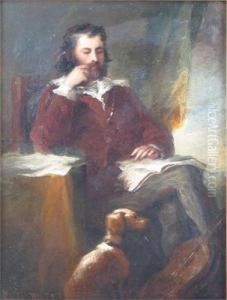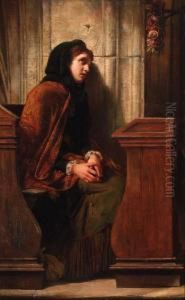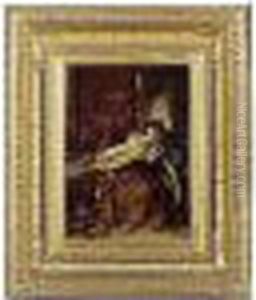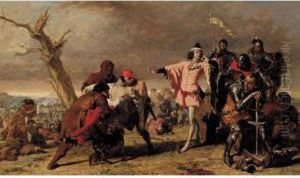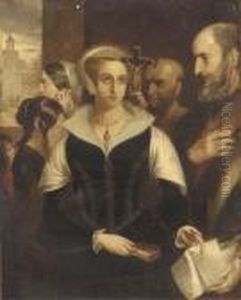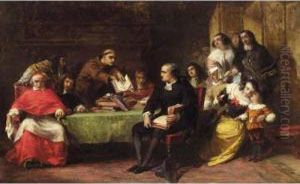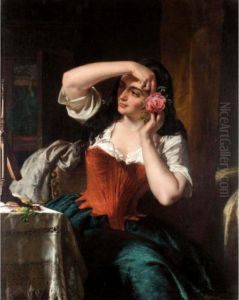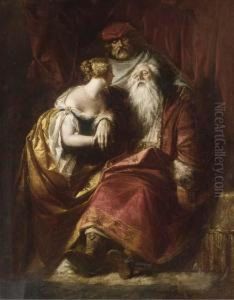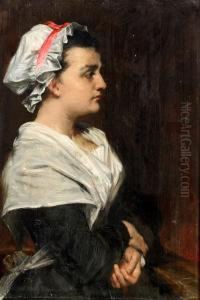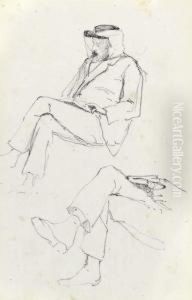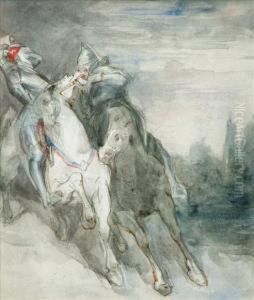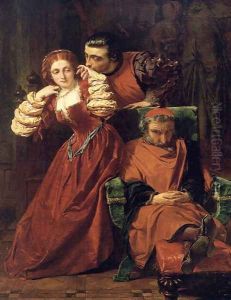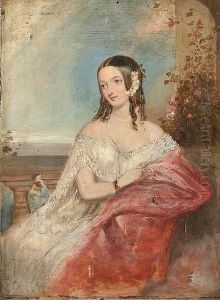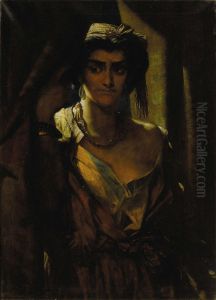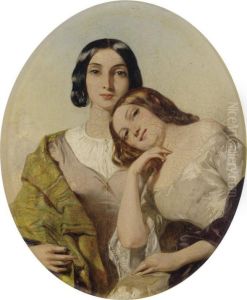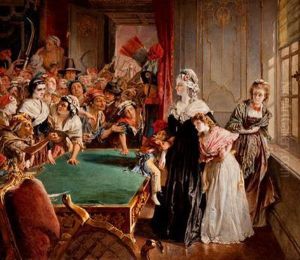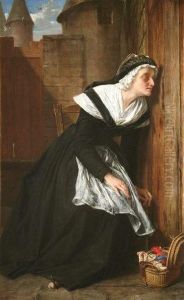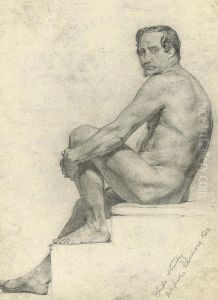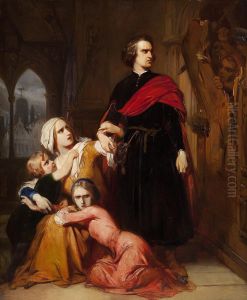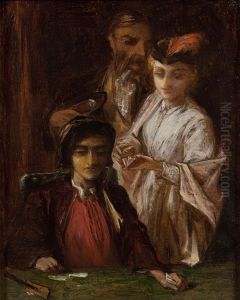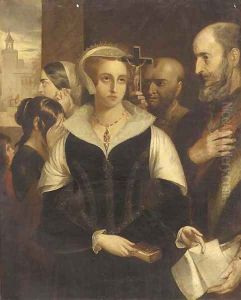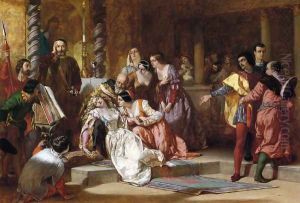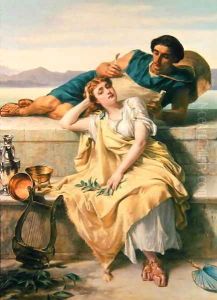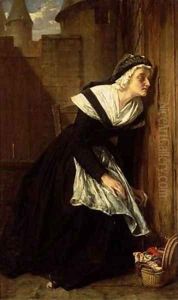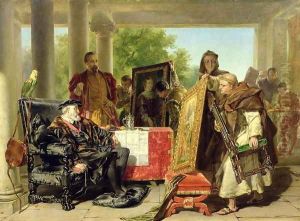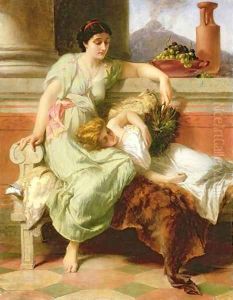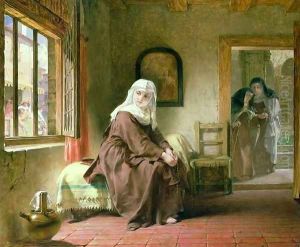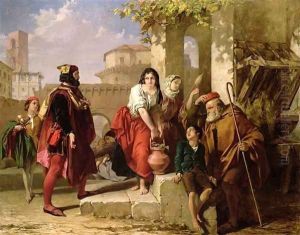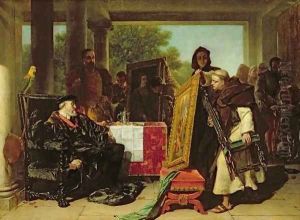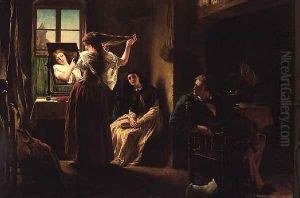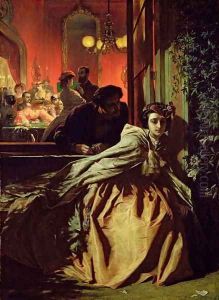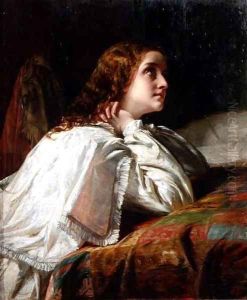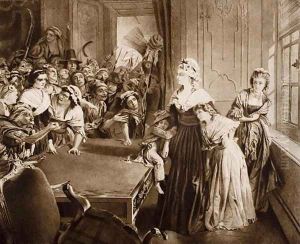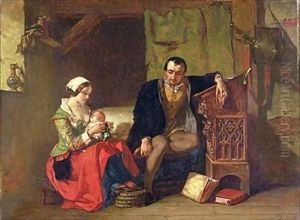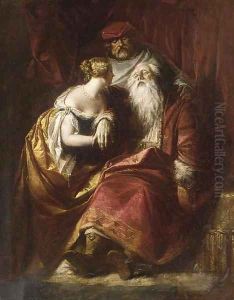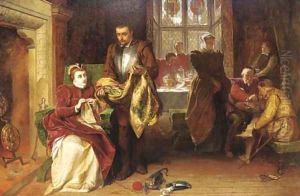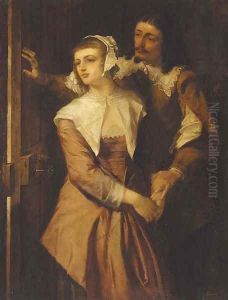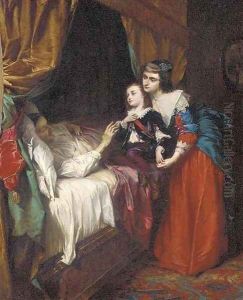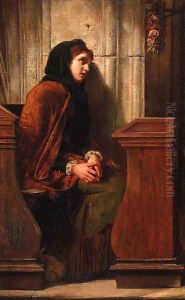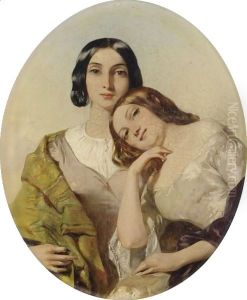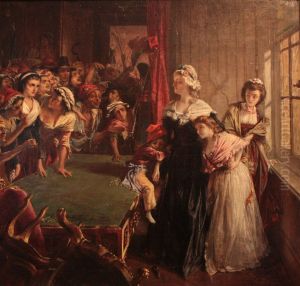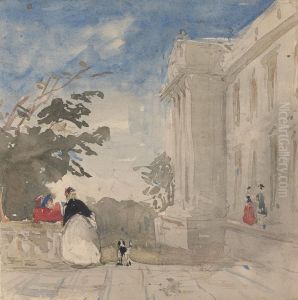Alfred Elmore Paintings
Alfred Elmore was a British academic history painter, born on 18th June 1815 in Clonakilty, in County Cork, Ireland. His early education was in classical literature and languages, but he developed a strong interest in art. In 1829, at the age of fourteen, Elmore moved to London to pursue his education in painting and enrolled at the Royal Academy Schools.
Elmore's style was heavily influenced by the teachings of Sir Joshua Reynolds and the works of the Old Masters, which he studied during a tour of Europe from 1837 to 1839. During this time, he visited France, Italy, and Germany, where he was particularly impressed with the works of Italian Renaissance artists. Upon his return to London, he began to exhibit his works at the Royal Academy and the British Institution.
His paintings often depicted historical or literary scenes, with a particular focus on dramatic and emotional moments. Elmore was known for his attention to detail, rich coloration, and the use of light and shadow to enhance the storytelling aspect of his works. Some of his notable paintings include 'Hotspur and the Fop' (1839), 'The Invention of the Stocking Loom' (1847), and 'On the Brink' (1865).
Throughout his career, Elmore was actively involved in the art community. He was elected an Associate of the Royal Academy in 1846 and became a full Royal Academician in 1857. His reputation in the Victorian art world was significant, and he was respected by his peers for his contributions to historical painting.
Elmore continued to paint and exhibit until the late 1870s. His later years were marked by declining health, which eventually led to his death on 24th January 1881 in London. Alfred Elmore left behind a legacy as a skilled painter who captured the essence of historical and literary narratives with his brush. Although not as widely known today, his works remain an important part of 19th-century British art history.
